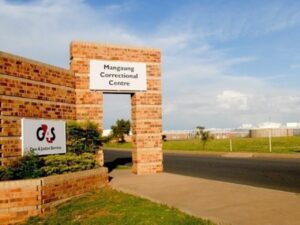Pope Francis is the new leader of 1,2 billion Catholics. But he’s also the man in charge of the Vatican’s finances.
Former pope, Benedict made progress in reforming the Vatican Bank by replacing the president and creating a financial-intelligence committee after allegeations of abuse and mismanagement spanning decades.
Recent controversy
Modern controversy surrounding the bank dates back to the era in which the Nazi party ruled Germany, when the Vatican Bank was accused of financing the party. The bank has also been accused of collaborating with the Sicilian mafia, and has been accused of money laundering.
1982 saw the most serious crisis for the Vatican Bank, when Roberto Calvi – known as “God’s Banker” – was found dead, hanging from Blackfriars Bridge in London. His death first appeared to be a suicide, but later five people including a mafia member were charged with murder. Calvi was chairman of the Banco Ambrosiana, which collapsed when $1,3 billion (R12 million) in loans disappeared. The loans were made to dummy companies and the Vatican Bank provided the letters of credit.
In 2010, the Italian government launched an investigation into the Vatican Bank’s operations, when the Bank of Italy alerted police to two suspicious transactions to the sum of $30 million (R277 million). The money was being sent from Credito Artiginato to JP Morgan Chase, and another Italian bank, Banca del Fucino. The Vatican Bank did not disclose the origin of the money and denied any wrongdoing, which is a violation of Italian law.
The Financial Information Authority was established in December of 2012 by Pope Benedict XVI, in order to monitor the financial activities of the Vatican Bank. Benedict also worked to get the Vatican Bank on the Organisation of Economic Co-operation and Development’s “white list” of countries who follow international banking standards.
Then, in 2012 the Vatileaks scandal broke. Leaked documents revealed that tens of millions of dollars had been transferred from the Vatican to American dioceses to help pay for child sex-abuse legal bills. A leaked letter from senior Vatican official, Archbishop Carlo Maria also complained of money laundering and corruption in the Vatican.
In May of 2012, Ettore Gotti Tedeschi, the Vatican Bank’s president was outed by the board of directors and accused of money laundering and not following laws that block financing terrorists and criminal gangs from credit. Tedeschi claims he was fired because he was getting “too close to the truth.”
Before Benedict abdicated the papacy, he appointed a new Vatican Bank president, Ernst von Freyberg.
How does the controversy affect Pope Francis?
Cardinals are expecting Pope Francis to clean up the scandal and modernize the church’s finances. If he fails, the Vatican may not have access to the global banking system.
Pope Francis’ task may prove to be tricky, as the Vatican’s hierarchy is divided. Some want transparency, and others don’t.
What is the Vatican Bank?
The bank’s official name is the Institute for the Works of Religion. The Vatican Bank is a privately held firm run by a Pope-appointed president, who reports to the committee of cardinals and Pope. As a private organization performing banking-like functions for religious institutions, it is not subject to public scrutiny. The bank makes provision for ATM transactions in Latin, and the small, castle-like headquarters are protected by Swiss Guards.
How are the Vatican Bank’s finances different to that of the Catholic Church?
In this context the church is called the Holy See, that includes the Roman Curia – the body that makes the church’s wheels turn – and its communication outlets.
The budget of the Holy See includes the Vatican Secretariat of State and its diplomatic missions around the world, Vatican Councils, the Holy Sees’s investment portfolio and properties, as well as the Vatican’s newspaper, radio, publishing house and television production company.
In 2001, The holly See brought in revenue of $308 million (R2,8 billion) while $326 million (R3 billion) was spent on expenditures therefore resulting in a deficit.
The revenue for the Catholic Church come from the Vatican Bank as they donate their investment profiles, contributions from dioceses and religious orders and financial investment returns.
The assets of the Vatican Bank are not property of the Holy See, and the banks account holders are private, with most accounts belonging to members of the clergy.
The Holy See is considered a charitable foundation affiliated with the Vatican.
How do the Vatican’s Bank finances and the Catholic Churches finances differ from the Vatican City’s finances?
The Vatican City has its own economy which is supported by Roman Catholic contribution annually, along with the sale of postage stamps, tourist fees and momentos.
In 2011, The Vatican City’s revenue was $133 million (R1 billion), according to the Catholic News Service.





